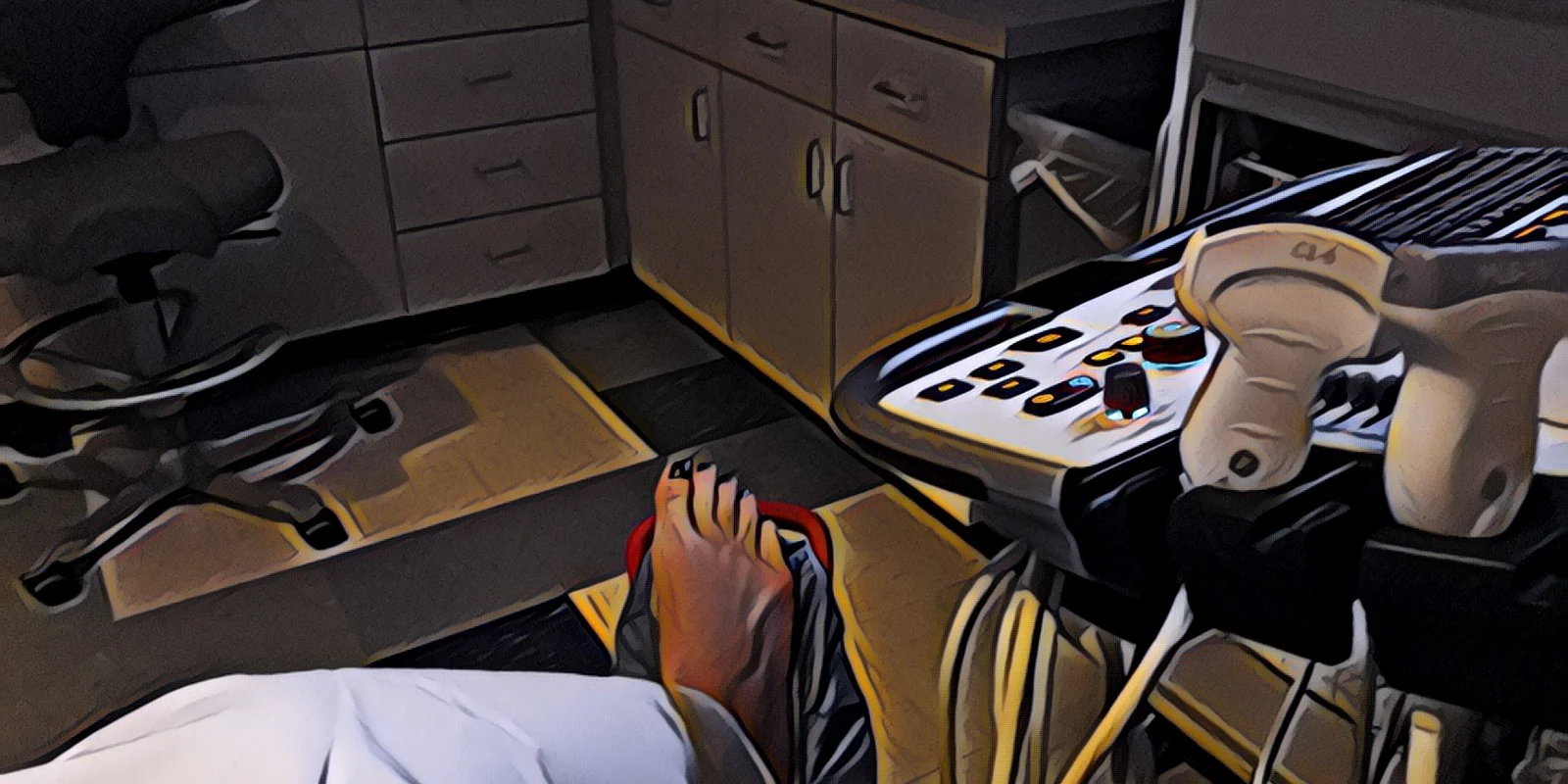
“Have you ever had this kind of ultrasound before?” she asked.
“No.”
But I’ve done hundreds of them, biting my tongue before I could add.
That last bit I kept to myself with echos of yesterday’s HHS announcement of a Gilead-esque Conscience and Religious Freedom Division resounding in my mind. Surely our conversation would have meandered from the reveal that I am a medical provider to the fact that my sonography experience is rooted in an early-career job at Planned Parenthood. The sonographer looked like a nice enough person; perhaps she would be accepting. Perhaps not. This is The South, you know.
Staring at the the ceiling tiles, I noted the subtle probe manipulations, knowing exactly what was illuminating the screen.
Cervix.
Left adnexa.
Right adnexa.
Uterus.
The whole while, I lie there thinking how I was probably an overreacting clinician getting a totally unnecessary study.
My symptoms weren’t severe.
I’ve never had anything remotely wrong with my health.
Sometimes I make a big deal out of nothing.
I’m sure this scan is textbook normal and this lady is wondering what the heck I’m doing on her exam table.
These two worries: firstly, that I may be treated differently based upon the fact I am a healthcare provider and secondly, that my beliefs completely unrelated to my care (in this instance, reproductive rights) may influence my patient experience, are not uncommon. My situation was somewhat unique in that as a medical educator, I was in the position to do something in the hope that future patients don’t have to harbor these worries. I could share with my clinicians-in-training the vital lesson that regardless whether a patient’s beliefs are identical or vastly differ from their own, or whether their patient is a brain surgeon or an undomiciled frequent flyer, each deserves the same level of unbiased care.
If I teach you one thing, it is to provide the same care to all your patients.
“Is this an ok time to talk?” asked the empathetic voice coming from my iPhone.
Setting the stage.
“So, you know how you had that ultrasound this morning…”
Gauging the patient’s perspective.
She flowed smoothly from there. I knew the steps.
Invitation to give information.
Knowledge.
Exploring emotions.
Strategy and summary.
Although over the phone, it wasn’t impersonal or rushed. Perhaps a bit disorienting being on the other side.
What a skill for a healthcare provider to have.
If I teach you one thing, it is how to break bad news to someone.
6.86. In centimeters, that’s the official ball diameter approved for regulation play by the International Tennis Federation.
6.7. In centimeters, that’s the size of the mass cut out of me. They took my ovary, too.
4. That’s the median observed prescription length, in days, for women’s health surgical procedures. With standard prescribing of one tablet every six hours, that equals sixteen total. More than half of those go unused.
4. That’s the number of oxycodone tablets I consumed post-op. That includes the one I choked down with some orange jello in the PACU as my anesthesia wore off. I dropped the rest off at a Take Back event.
With overprescription implicated as a catalyst to the opiate epidemic, teaching our medical learners how both to prescribe judiciously and set expectations for pain related to health conditions are paramount. We owe it to our future clinicians and their patients to ensure that these lessons are effectively integrated into medical curricula and not just an afterthought.
If I teach you one thing, it is that it’s normal to feel (some) pain.
Experiencing the healthcare system from the other side of the curtain was humbling. Quite frankly, it was scary at times…and I’ve worked in medicine for a dozen years! Luckily, my condition was benign. Imagine the amplification of these emotions for patients to whom this system is foreign or whose prognosis is not as positive.
Aside from humbling and scary, my experiences were also educational to me, and hopefully indirectly to the medical learners to whom I’m tasked to impart some bit of knowledge. Although I’ve surpassed my vow to teach you just one thing, each item shared can be condensed to the notion that as healthcare providers we must consider how our actions can be perceived by our patients. What we do everyday at work can become numbingly routine. We’re guilty of thinking (or saying) things like: I’ll go see that MI in room 2 or just one more endoscopy to go today. Sometimes we forget that what we see, say, or do can be potentially life-altering to whom we evaluate, diagnose, and treat.
If I teach you one thing, it is to remember that you will be a patient one day, too.
Janelle Bludorn is an emergency medicine physician assistant and assistant professor of physician assistant studies. She’s been called the unofficial official millennial voice in medical education. She has no conflicts of interest. Find her on Instagram and Twitter @JanelleRBlu.
Want to be part of the Doximity Authors Program? We are accepting applications through May 23, 2018.







